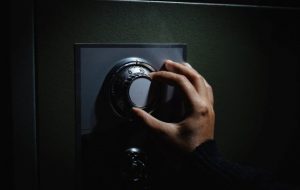Stockholm syndrome is a condition that occurs when hostages develop an emotional or psychological connection to the people who held them in captivity. A person with Stockholm syndrome develops positive associations with their captors or abusers. Mental health experts do not recognize it as an official mental health disorder, meaning it is not listed in the fifth edition of the Diagnostic and Statistical Manual of Mental Disorders (DSM-5).
Since there isn’t a clear definition of Stockholm syndrome, some experts have linked it to other psychological phenomena associated with abuse, such as trauma bonding, battered person syndrome, and learned helplessness. Although experts do not fully understand how the response is formed, many believe it is an emotional response and serves as a coping mechanism for people experiencing trauma.
Stockholm syndrome can develop in a number of ways, like if the captor treats their victims humanely or has too much face-to-face time, causing them to bond. It can happen within just a few days or take many years for this bond to form. Still, as a positive bond forms, victims may feel love, sympathy, and even a desire to protect their captors.
There have likely been more cases of Stockholm syndrome than we know about, possibly dating back centuries, but it wasn’t until a 1973 bank robbery in Stockholm, Sweden, that the term was coined by criminologist and psychiatrist Nils Bejerot.
On August 23, 1973, Jan-Erik Olsson attempted to rob the Sveriges Kreditbanken bank on Stockholm’s upscale Norrmalmstorg square and took four employees as hostages. He was later joined by a former cellmate, Clark Olofsson, and the two remained inside the bank with the hostages during a six-day standoff with police. After the hostages’ release, the authorities found that the hostages had developed strong emotional bonds with their captors, even defending them and refusing to testify against them. Here are 10 facts about the Normalmstorg robbery.
Related: Top 10 Crimes That People Committed For The Strangest Reasons
10 An Escaped Convict

On the morning of August 23, 1973, Jan-Erik Olsson, 32 at the time, walked through Stockholm’s upscale neighborhood known as Norrmalmstorg Square. He walked into a busy bank, the Sveriges Kreditbanken, with a folded jacket that he carried in his arms. Olsson suddenly pulled a submachine gun from underneath the jacket, fired it at the ceiling, and shouted, “The party has just begun!” He was also armed with explosives, rope, and a transistor radio.
Soon after, two policemen who were on the top floor of the building responded to the silent alarm and attempted to restrain Olsson. One officer was holding his gun, which caused Olsson to fire at him, wounding his hand. This caused Olsson to panic and take three bank employees hostage in the bank vault.
At the time of the robbery, Olsson was already a convict and had recently escaped a Swedish correctional facility in Kalmar when he failed to return after a furlough to finish out his three-year sentence for safe cracking. He had already served half of his sentence.[1]
9 An American Disguise
Olsson didn’t speak his native tongue during the robbery. In fact, he spoke English while using an American accent, obscuring his identity. He also wore a thick brown wig and a pair of toy store spectacles; his cheeks were rouged, and he dyed his mustache and eyebrows from reddish-brown to jet black.
When Olsson announced his presence at the bank by firing rounds into the ceiling and shouting, “The party has just begun!” with his American accent, he was copying a line from an American movie about a convict on the loose. He had played the part so well that when the plain-clothes officer, Morgan Rylander, was being held at gunpoint, Olsson told him to sing a song. The sergeant chose Elvis Presley’s “Lonesome Cowboy,” most likely assuming it would appease the American man before him.
The police spent two days trying to figure out Olsson’s identity, only succeeding when his voice sounded familiar to a certain detective.[2]
8 Helping a Friend
After tak ing his hostages, Olsson spoke with law enforcement to negotiate the release of his prisoners in exchange for meeting his demands. He demanded three million Swedish kronor ($700,000), 2 pistols, bulletproof vests, helmets, and a fast getaway car. He also wanted to take the hostages with him as he evaded the police to make sure he could get away safely. His final demand was the most unexpected as he demanded the release of his prison cellmate, Clark Olofsson, who was serving time for armed robbery and acting as an accessory in the 1966 murder of a police officer.
The two convicts had met while serving their prison sentences and became quick friends. Clark Olofsson was a well-known career criminal and had spent more than half of his life in prison for dealing narcotics, robbery, assault, and attempted murder. Olsson was fascinated by Olofsson’s criminal past as a bank robber. On January 7, 1973, after Olsson escaped prison, he tried to rescue Olofsson by blowing up a wall with dynamite he had smuggled inside, but it didn’t detonate.
Just hours after making his demands, police delivered Olsson’s ransom money, a blue Ford Mustang with a full tank of gas, and fellow convict Clark Olofsson. Authorities only allowed Olofsson to be released to serve as a communication link between them and Olsson. The one demand authorities couldn’t agree to was allowing the robbers to leave with the hostages in tow to ensure a safe escape. The police requested that the two gunmen leave the hostages behind when they left.[3]
7 One More Hostage

An undercover officer, Imgemar Warpefldt, had arrived shortly after the silent alarm was set off, as he was already in the bank on the top floor. When he made it down the stairs, he was holding his gun, which caused Olsson to open fire and injure Warpefldt’s hand. This was while the robber told Morgan Rylander to sing a song.
Following the shooting, Olsson decided to take hostages and took Birgitta Lundblad, Elisabeth Oldgren, and Kristin Ehnmark. He retrieved a rope from his bag and ordered a male bookkeeper to tie the girls’ hands and feet. Next, he put Officer Rylander to work, ordering him to clear out the forty employees and customers from the bank… everybody except the hostages.
After Ryland had cleared the building, he let himself out of the bank, leaving the two gunmen and three hostages. Days later, while Olofsson was scouting the perimeter looking for police trying to infiltrate, he found a bookkeeper, Sven Safstrom, hiding in a stock room used for storing checkbooks and stationary supplies. He was taken hostage also.
The hostages were detained in a bank vault on the main floor. However, the police were able to get a phone in the building so that they could communicate with the hostages and their captors.[4]
6 What Nice Talk, Strangely

With heavy police presence and snipers surrounding the bank, Olsson and Olofsson decided to barricade the four hostages and themselves in a small, cramped bank vault. While the public awaited news of this ongoing tragedy, a bond was being forged between the captives and their abductors.
Twenty-three-year-old Kristen Ehnmark stated that Olsson draped a wool jacket over her shoulders when she was shivering, soothed her when she had a bad dream, and gave her a bullet of a souvenir from the event. The gunmen allowed Birgitta Lundblad, 31, to call her family because she had a husband and two children. When they didn’t answer, they consoled her and told her to try again. Even hostage Elisabeth Oldgren, who was 21 at the time, shared that Olsson allowed her to walk outside of the vault while attached to a 30-foot (9.1-meter) rope since she suffered from claustrophobia.
At one point, Olsson threatened to shoot Sven Safstrom to shake up the police and said he would do it in the leg so it wouldn’t kill him, and he would allow him to get drunk first. Safstrom, who was the only male victim, recounted how kind it was that he offered to only shoot him in the leg.[5]
5 In Fear of the Police

By the second day, it was becoming apparent that the hostages were starting to fear the police outside of the building more than their captors. That day, they allowed the police commissioner inside so that he could inspect the hostages’ health, and he noticed that the captives appeared to be hostile to him. He later told the press that he doubted the gunmen would hurt the hostages as they had seemed to form a bond.
Another indication that something was amiss came the day after Olsson made a threatening phone call to the prime minister, Olof Palme, and took a stranglehold on Oldgren, causing her to scream when he hung up. The next day, Ehnmark called the prime minister back from inside the bank and told him how disappointed she was with his attitude toward Olsson and asked if he would mind letting them all go free in the escape car. She assured Palme that the robbers hadn’t done anything to them and that what she really feared was that the police would attack and cause everyone to die.[6]
4 It’s a Gas, Gas, Gas
On August 26, the authorities drilled a hole into the main vault from an apartment above. Officers were able to take a few pictures of the hostages and Olofsson when Olsson opened fire and threatened to kill the hostages if any gas attacks occurred. He then attached snare traps to the hostages’ necks that he claimed would strangle them in the event of a gas attack.
After running out of options and six days into their captivity, police drilled a hole in the vault where the hostages and their kidnappers were sleeping and pumped tear gas inside. Finally, after another hour—and 130 hours total—the perpetrators surrendered. The police called for the hostages to come out first, but all four captives refused, wanting to protect their abductors.
The convicts and hostages embraced, kissed, and shook hands as they were able to walk out of the vault. When police seized Olsson and Olofsson to put them under arrest, two of the female hostages cried for the officers not to harm them, telling police the convicts did not hurt them.[7]
3 No Testimony

As the standoff came to an end, police and the public were left perplexed by the victims’ concern for their two captors. The hostages were taken to a psychiatric clinic for evaluation. The physician, Lennart Ljonggren, described their condition as similar to victims in shock due to war and explained that the hostages became emotionally indebted to their abductors, not the police, for their lives being spared.
The hostages continued to display admiration and friendship with their captors, especially Ehnmark. This caused a psychiatrist close to the case, Nils Bejerot, to coin the term “Stockholm syndrome” to describe the hostages’ behavior.
While both Olsson and Olofsson were on trial, all four hostages refused to testify against them and even defended them to the media. However, both men were convicted. Olofsson claimed that he had not helped Olsson but had only tried to save the hostages. Olsson received a 10-year prison sentence. Olofsson was also sentenced to an extended prison term for the robbery but was later acquitted when he won an appeal after arguing that the police brought him to the crime scene. He only served the remainder of his previous sentence afterward.[8]
2 An Obsessed Fan Gets Noticed

The hostages remained in contact with Olsson and Olofsson while they served their time in prison. All four of them made routine visits to the jail to visit and support the two men. After Olofsson’s release, he met with Ehnmark frequently, and their families even became friends. He went on to commit more crimes. After several more stints in jail, a marriage and several other relationships, and six children, Olofsson has returned to Sweden, happily living our his life.
As Olsson served his 10-year sentence, he received several letters from women who found him attractive after seeing so much coverage on the case. He ended up getting engaged and marrying one of the women from these letters.
After his release, Olsson, too, committed more crimes and ran from police for a decade. After running for years, in 2006, he turned himself in to Swedish police for alleged financial crimes. However, the police told him that the charges were no longer active, and he was free to go.
Jan-Erik Olsson moved to Thailand with his family and wrote an autobiography entitled Stockholm Syndrome. He was since returned to Sweden.[9]
1 A First for Sweden
While the world watched the reoccurring Swedish TV broadcasts with interest in the Norrmalmstorg robbery and what was happening day by day, history was made as it was the first time on Swedish television that a live-action drama was produced using a current event. At the same time, King Gustav Adolf VI was in his dying hours at the Royal Palace. Still, the interest in the robbery outweighed the public’s concern.
The drama that was unfolding captivated people around the world, which also caused the public to flood police headquarters with phone calls. Citizens were calling police to suggest various ways to end the standoff, such as sending a swarm of bees into the vault or sending in inflatable dolls wearing police uniforms so that Olsson would fire at them and run out of bullets.[10]
